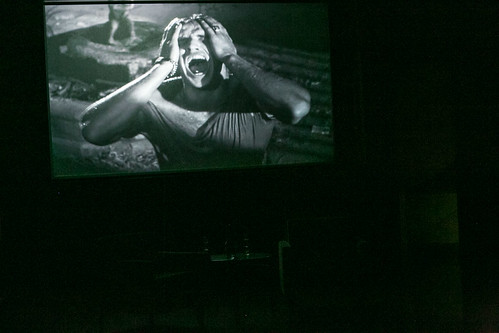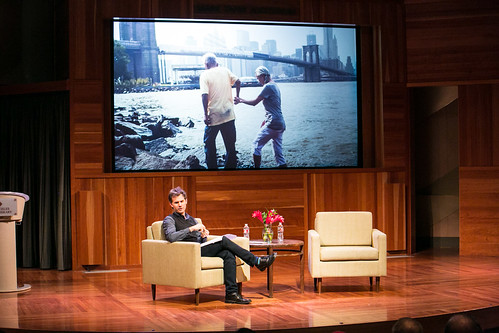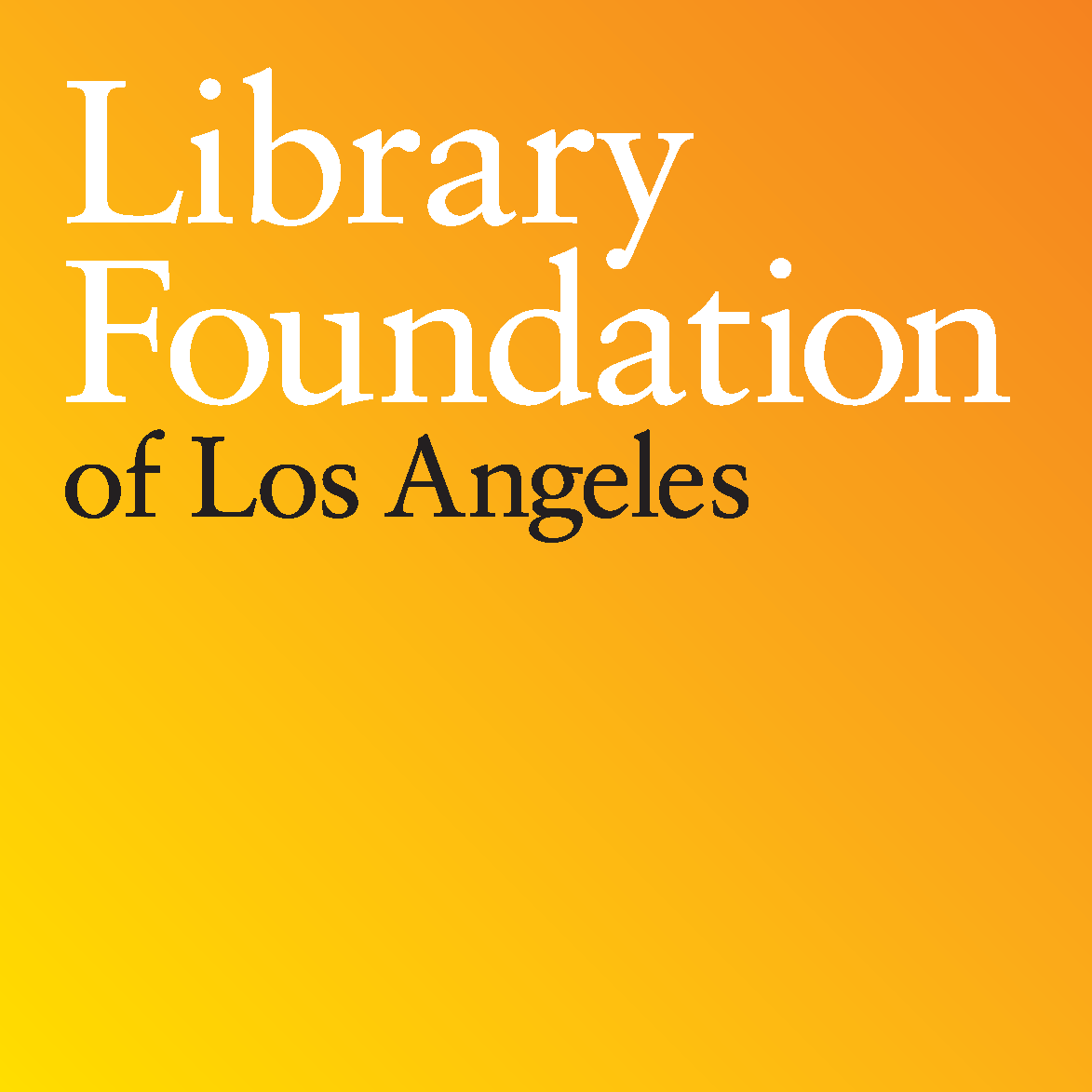At each Lost & Found at the Movies event we choose a theme to explore. On the heels of Valentine’s Day, during an evening called Love is a Many Splendored Thing, we looked at love in movies and love for movies.

The opening clip reel featured moments from a handful of cinema’s great love stories (too many to list). When Ken Brecher and I first spoke about this series, he encouraged the notion that I make the events ‘personal’ and that was the case with these clips – excerpted from a longer half-hour piece that served as an ‘installation’ at my wedding reception, playing in a loop and projected inside a gazebo on the grounds. In the tradition of reading poetry at weddings, romantic films are part of the way we think (or maybe idealize) love.

In putting together those clips, I noticed a lot of patterns: there’s invariably the first moment the lovers see each other, there’s the first time they meet, a declaration of love (not without some difficulty for many), then tension, discord or even a break up. Often times that leads to running (possibly precipitated by a revelation) and then a speech, and of course the ending, for better or worse.
Show Me Love
On the eve of both the Independent Spirit Awards and Academy Awards, it felt appropriate to look back at the year of film and acknowledge that some of the best films (and some of the most overlooked) were love stories.
I’m not big on superlatives, but if pressed the best film of the year for me was Spike Jonze’s Her, an artful story of loneliness, love and a near future world (drawn in brilliantly evocative detail) in which a romance between man and a computer operating system is not only possible, but seemingly an opiate for a sadly solitary society. There was also Richard Linklater’s Before Midnight, the third part of his trilogy and, for me, the strongest and most complex; a portrait of mature love and marriage that looks not at falling in love, but staying in love. And of course, Frances Ha, the wonderful collaboration between Noah Baumbach and Greta Gerwig and what struck me as a truly contemporary story – a woman working her way through a set of identities in a search of a figurative and literal room of her own.

There were also a handful of exceptional films that were overlooked and really deserve attention. Ain’t Them Bodies Saints, a film that begins as a Bonnie & Clyde outlaw romance, but moves to a deeply moving reflection on love changing over time. Cutie and the Boxer, which although it was nominated for the Best Documentary Feature Academy Award, it was not widely seen and really should be. Not only one of the best verité docs in years, but a richly layered love story between a married couple, two Japanese artists and their lives together in New York over the past 40 years. For completely unique love stories there was Fill the Void, a film that tells the story of love and marriage within an ultraorthodox community in Israel – subtle, moving and unlike any film you’ve ever seen. Iranian director Asghar Farhadi, who won an Academy Award for The Separation, made The Past in France. It explores the relationship between an estranged couple as they formalize their divorce and is told with the same amazing observation and compassion as his earlier films. A high school love story with real honesty and edge was James Ponsoldt’s The Spectacular Now, an adaptation of a Tim Tharp novel. And Shane Carruth’s second feature, Upstream Color, which developed a dedicated following both here and internationally, pushes the boundaries of filmmaking, envisioning love within the framework of poetic, non-narrative and largely non-verbal experience.
We also turned toward the future and the abundance of interesting films that will make their way to theaters this year (Indiewire ran a great list of highly-anticipated 2014 films). With Sundance and Berlin having just wrapped, we rushed through a few highlights:
Damien Chazelle’s debut feature was made in a remarkably short period of time, an extension of his short that screened last year at Sundance, Whiplash won both the jury prize and the audience award for US Dramatic Competition. Craig Johnson’s The Skeleton Twins, a poignant, superbly crafted story of a sibling relationship, features outstanding dramatic performances from Kristin Wiig and Bill Hader. Richard Linklater’s Boyhood has been anticipated for most of the time it has been shooting – over 12 years! A completely unique film, chronicling the life of a young boy as he grows up (played by the same actor, Ellar Coltrane, over that time), was worth the wait. A few other stories of boyhood (and fathers and son) were Kat Candler’s fabulous Hellion with Aaron Paul and Imperial Dreams from Malik Vitthal. For the best Iranian vampire Western, you could turn to the fantastic genre mish mash of A Girl Walks Home Alone at Night from upcoming filmmaker and force of nature Lily Amirpour. Two remarkable films from Ireland were Calvary, a profound, layered reflection of faith and human nature from John Michael McDonagh (The Guard) starring Brendan Gleeson in what one hopes is an Oscar-worthy role as a priest, and Frank, a completely unique and subversive look at creative ambition, bands and belonging from the very talented Lenny Abrahamson.
As always a number of foreign language films stood out, including Blind from Norwegian writer/director Eski Vogt (writing partner of Joachim Trier on Reprise and Oslo, August 31; Difret (a riveting story of tradition and modernity in Ethiopia); To Kill A Man, another fine film to emerge from the burgeoning Chilean film movement, which won the Grand Jury prize; The Lunchbox, a classical romance set in bustle of modern Mumbai and recently released by Sony Pictures Classics; and finally, Ida, a Polish film from Pawel Pawlikowski and perhaps the most beautiful, meditative film you’ll see this year.
On the documentary front there was Steve James’ profile of Roger Ebert, Life Itself; the story of Sepideh a teenage girl in Iran who wants to be an astronaut/astronomer; and Edet Belzberg’s stunning Watchers of the Sky about four people who have devoted their lives to the pursuit of international criminal justice. From Berlin, Wes Anderson’s The Grand Budapest Hotel played to rave reviews and has just opened here. Praia di Futuro from Karim Ainouz was a poetic reflection on love, and the jury prize winner was a Chinese crime story, Black Coal, Thin Ice, but the standout for me was the astonishing debut film from Yann Demange, ’71, about a ‘night in the life of’ a British solider caught on the wrong side of Belfast during the Troubles.
And there are so many more things to look forward to this year: Night Moves (Kelly Reichardt), The Cobbler (Tom McCarthy), The Rover (David Michod), Inherent Vice (Paul Thomas Anderson), The Lobster (Yorgos Lanthimos), Far From the Madding Crowd (Thomas Vinterberg), Carol (Todd Haynes), Two Days, One Night (Dardennes brothers), Winter Sleep (Nuri Bilge Ceylan), Mr. Turner (Mike Leigh), The Cut (Fatih Akin) and Assassin (Hou Hsiao-Hsien).
True Romance
In a film town like Los Angeles, we’re fortunate to be surrounded by a particular kind of library: film archives. For each Lost & Found at the Movies events, I like to go foraging through a library or archive.
This time, I spoke to May Haduong at the Academy Film Archive, part of the Academy of Motion Picture Arts & Sciences. It’s the third largest film archive in the country; they have 222 million feet of film. We took a look at only a couple hundred feet (all 16mm). Appropriately, the footage brought us “true romance”: home movies of notable Hollywood couples. There were three segments:
James Wong Howe and Sanora Babb. Home movies have an edge when shot by renowned cinematographer. James Wong Howe who worked on over 100 films during the golden age and won 2 cinematography Academy Awards for Rose Tattoo and Hud, also made many home movies throughout his career. Probably 1937, this footage features Howe travelling in the San Francisco Bay Area by car with his partner and future wife, Sanora Babb, her sister Dorothy, author James Hilton and his wife Alice, and actor Charles Korvin.
Humphrey Bogart and Lauren Bacall. Shot in the mid-late-1940s this footage shows Humphrey Bogart and Lauren Bacall, who had been married a few years on their boat, the Santana. Bogart sailed quite often – 40 weekends a year – and taught Bacall, who joined him less after the birth of their first child. Joining them is Richard Brooks who directed Cat on a Hot Tin Roof, Lord Jim and Looking for Mr. Goodbar and wrote Key Largo. Bogart was once quoted saying, “The problem with having dames along is you can’t pee over the side.”
And finally, Alfred Hitchcock, Alma Hitchcock and their daughter Patricia. It’s likely that Alfred and Alma Hitchcock, collaborators and husband and wife, acquired a camera when Pat was born in 1928. The bulk of these were shot near London at Shamley Cottage, a country home. Hitchcock shot many of them, handing the camera off to Alma on occasion. This is the earliest known color footage of Alfred Hitchcock – probably shot in 1929. It’s Kodacolor, a process involving a filter and black and white stock to render color – not as vibrant as Kodachrome. Most notable is the playful, quirky side of Hitchcock revealed in these movies.
 Picture above courtesy of the Alfred Hitchcock Collection at the Academy Film Archive. Special thanks to the Academy Film Archive and the estates of James Wong Howe, Alfred Hitchcock and Richard Brooks for allowing these home movies to be used in the collection.
Picture above courtesy of the Alfred Hitchcock Collection at the Academy Film Archive. Special thanks to the Academy Film Archive and the estates of James Wong Howe, Alfred Hitchcock and Richard Brooks for allowing these home movies to be used in the collection.
Where’s the Love?
We shifted gears from love in the movies to love for the movies.
In the first Lost & Found at the Movies event, I had rummaged through the Los Angeles Public Library’s breathtaking photography collection to find a number of images of Los Angeles’ movie palaces over the years, beginning with the openings of famous theaters like Grauman’s Chinese and the El Capitan all the way through the construction and opening of the Cinerama Dome. You can’t help but feel struck by the majesty of those spaces and what that brought to the experiences itself. And with that grandeur in mind, it’s tough to survey the city’s theater landscape today – the countless defunct theaters and empty marquees – without a certain sadness. That is until you look a little closer….
There’s a thriving culture of theatrical exhibition across Los Angeles and vibrant community waiting for you to be part of it. So I decided to spend a day trekking across town and talking to people whose passion is for showing movies. The day trip was chronicled by filmmaker Michael Bodie in this 8 minute piece “Where’s the Love?”
Where’s the Love? from Library Foundation of Los Angeles on Vimeo.
So in addition to great first-run venues that feature interesting films (Landmark’s venues, Laemmle Theaters, Sundance Sunset, and others), we can take hope in places like the Academy Film Archive, American Cinemateque at the Aero and Egyptian theaters, Billy Wilder Theater (UCLA Film & Television Archive), Cinefamily, Cinespia, Downtown Independent, LACMA, New Beverly, Redcat and occasionally the Getty and Skirball. Also both UCLA’s Melnitz Movies and USC Stark Family Theater can be counted on for interesting specialty films.
Some highlights: the Academy Film Archive has several programs in the works, from a Jim Jarmusch retrospective to Penelope Spheeris’ Decline of Western Civilization trilogy (with special guests) and some not-to-be missed live events including Ennio Morricone in conversation with Quentin Tarantino. Shannon Kelly and the UCLA Film & Television Archive will be presenting a Robert Altman retrospective from April to June. The American Cinemateque has just started a Jean-Luc Godard series and will offer their famed Film Noir series again this spring. And in addition to Cinefamily’s upcoming runs of Alan Resnais’ Je t’aime, je t’aime, you can find their long running series like Friday Night Frights, The Silent Treatment, Lost and Found Film Club and The Doug Benson Movie Interruption.
The Happiness Quotient
Love makes us feel good, maybe it’s the only thing that mitigates the world we live in. But does cinema show us real love – or just movies love. Is it all just warm and fuzzy? We break for statistics….
I used three sample sets: AFI’s 100 Greatest Love Stories, Sight & Sound’s Top 100 films, and all the winners of the Best Picture Academy Award.
What percentage of the great romances actually have a happy ending? In a non-scientific statistical analysis, I found the following:
AFI 100: 62% of the couples in these films end up together in the end, 38% do not (and for 26% it’s because one or both are dead). Noteworthy is that in seven of the top 10 films the couple does not end up together.
Sight & Sound. I considered 26 of the Top 100 films to be veritable love stories. Of those 12 end happily (46%), 11 unhappily (42%), of those 5 are a result of death. That leaves 3 in the murky Gray Zone – although the couple is together, whether they are happy is debatable (e.g. L’avventura).
Best Picture. Subjectively, 30 Best Picture winners are love stories. Of those, 16 end happily, 11 unhappily including 8 deaths. 2 I put in a fourth category in which the female object of affection dies at the beginning in order for the male protagonist to grow as a person (usually by exacting bloody revenge).
Dark Side of the Human Heart

In our final segment with writer/director Stacie Passon the conversation about love stories explored the depths of human nature, mature relationships and marriage. We looked at clips from Passon’s Concussion, Rossellini’s devastating Journey to Italy, which Cahiers du Cinema called the first modern film, Bergman’s Scenes from a Marriage and Godard’s A Woman is a Woman, at which point we ran out of time before getting to Alan Alda’s The Four Seasons and Linklater’s Before Midnight.
So, moving from the most romantic moments of cinema to the more profound and dark contours of the human heart, I think it’s fair to say we found quite a lot of “splendor”.
–Posted by John Nein, Senior Programmer at the Sundance Film Festival and Curator of Lost & Found at the Movies
